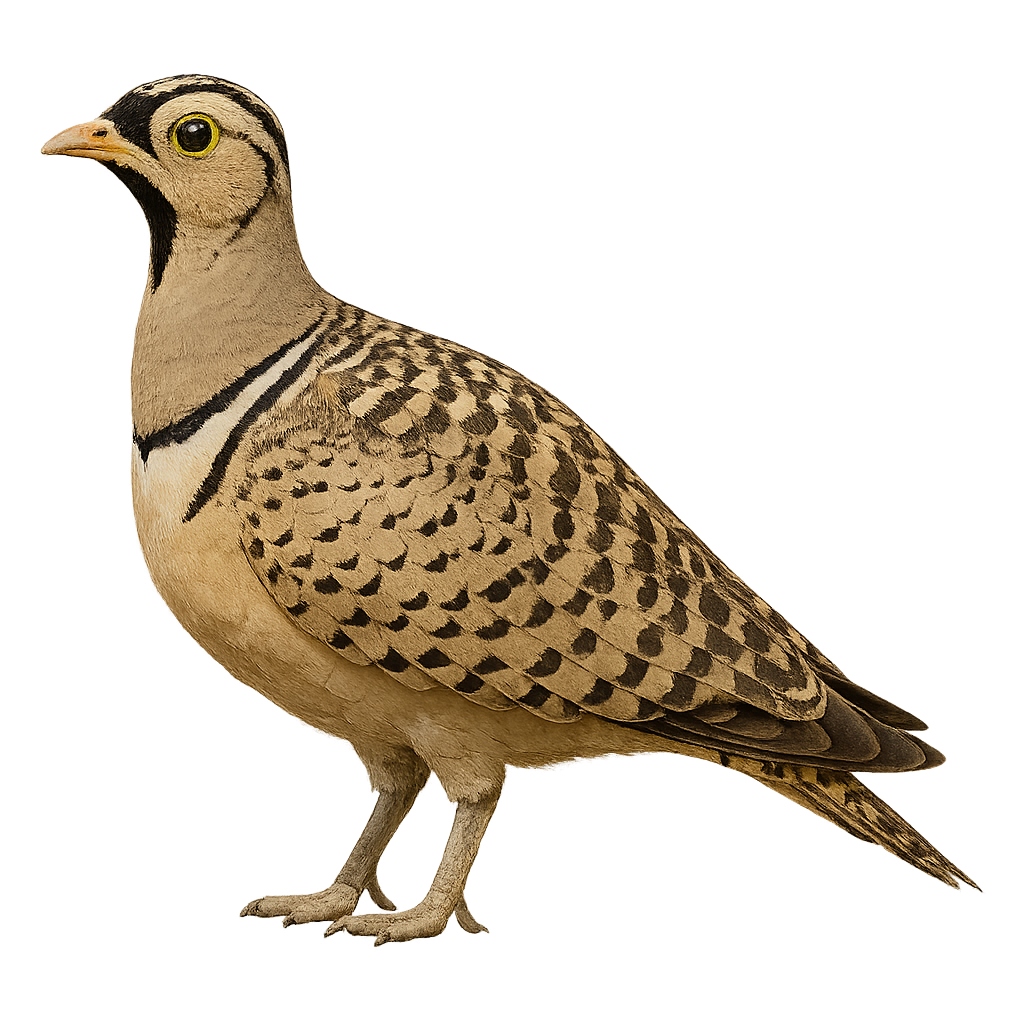Your wildlife photography guide.
Explore the black-faced sandgrouse in detail, study its behavior, prepare your shots.
Where to observe and photograph the black-faced sandgrouse in the wild
Learn where and when to spot the black-faced sandgrouse in the wild, how to identify the species based on distinctive features, and what natural environments it inhabits. The WildlifePhotographer app offers tailored photography tips that reflect the black-faced sandgrouse’s behavior, helping you capture better wildlife images. Explore the full species profile for key information including description, habitat, active periods, and approach techniques.
Black-faced Sandgrouse
Scientific name: Pterocles decoratus

IUCN Status: Least Concern
Family: PTEROCLIDAE
Group: Birds
Sensitivity to human approach: Suspicious
Minimum approach distance: 10 m
Courtship display: March to May
Incubation: 21-23 jours
Hatchings: April to June
Habitat:
Arid regions, savannas, semi-deserts
Activity period :
Primarily active during the day, with peak activity in the morning and late afternoon.
Identification and description:
The Pterocles decoratus, commonly known as the Black-faced Sandgrouse, is a medium-sized bird belonging to the Pteroclidae family. It is primarily found in the arid and semi-arid regions of East Africa, particularly in Kenya and Tanzania. This bird is distinguished by its cryptic plumage, which allows it to blend into its sandy environment. Males feature a characteristic black face, contrasting with the rest of their brown and beige plumage. Females are duller, providing additional camouflage during nesting. Black-faced Sandgrouse primarily feed on seeds and are often observed in groups near water sources, especially at dawn and dusk.
Recommended lens:
400 mm – adjust based on distance, desired framing (portrait or habitat), and approach conditions.
Photography tips:
To photograph the Black-faced Sandgrouse, it is advisable to use a telephoto lens of at least 400mm to capture detailed images without disturbing the bird. The best opportunities arise early in the morning or late afternoon when these birds gather near water sources. Be patient and discreet, using a hide if possible, to blend into the environment. Opt for backlit shots to highlight the male's distinctive plumage.
The WildlifePhotographer App is coming soon!
Be the first to explore the best nature spots, track rutting seasons, log your observations, and observe more wildlife.
Already 1 432 wildlife lovers subscribed worldwide

